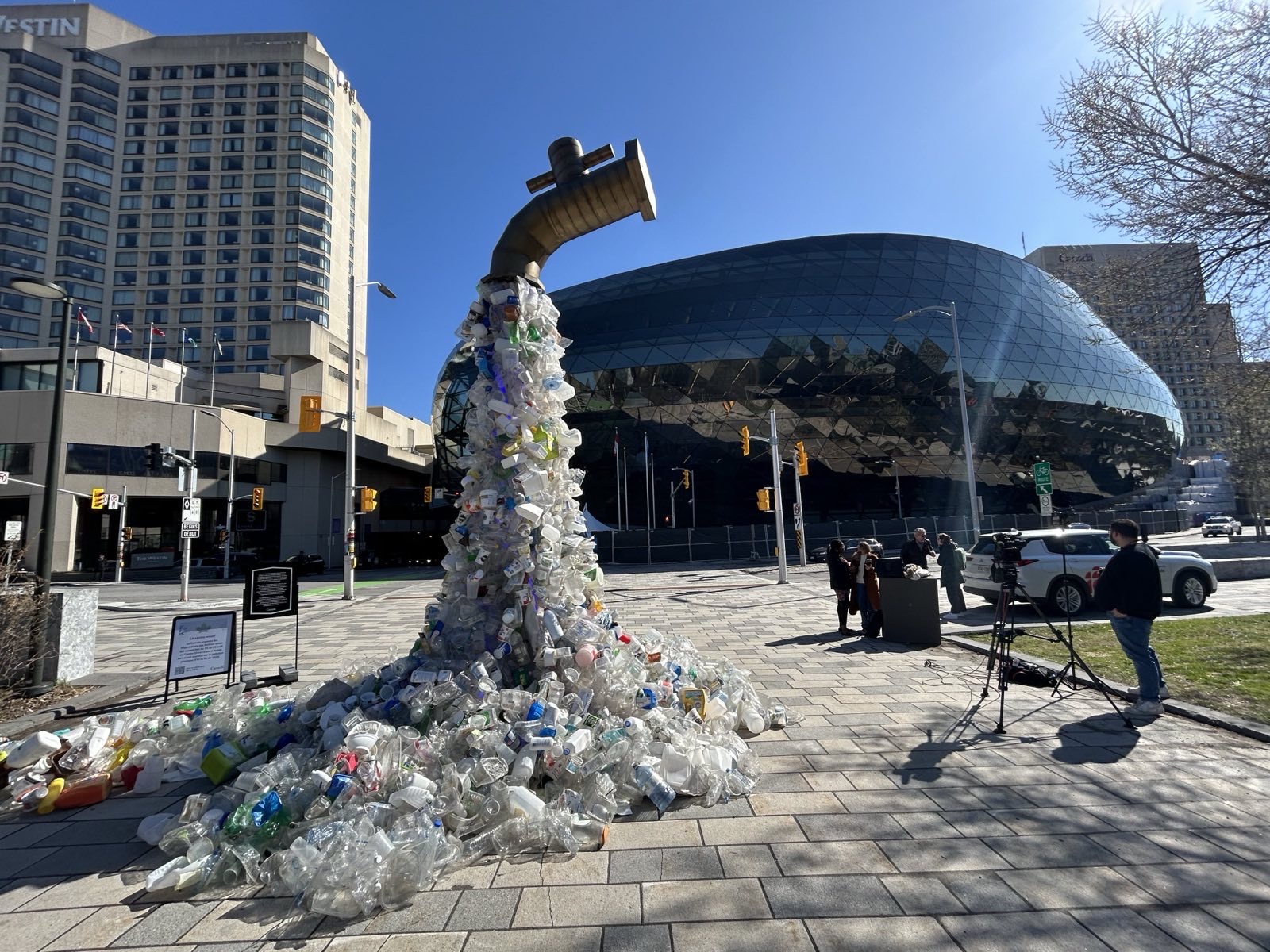U.S. government expands use of social cost of carbon
President Biden ordered federal agencies to expand their use of the social cost of carbon, which could have a big impact on a wide set of federal decisions affecting greenhouse gas emissions.

The Biden administration has told federal agencies to expand their use of the social cost of carbon, an attempt to more thoroughly incorporate the costs of climate damages into a wider set of government actions. The move could have far-reaching implications for U.S. greenhouse gas emissions, helping to move the needle on climate action.
The social cost of carbon is a way of measuring and accounting for the losses and damages associated with climate change — the cost of crop failures, heat waves, public health impacts, and even deaths associated with climate disasters.
The climate crisis has taken on greater urgency this year, as disasters continue to proliferate at an alarming rate. In 2023 alone, the U.S. suffered from 23 climate disasters with damages exceeding a billion dollars, the highest number on record. The total cost of those events exceeds $57 billion.
By estimating and adding up expected damages from climate change, it becomes possible to account for the costs of rising emissions.
“You can think about the social cost of carbon as the total monetary costs to society that are imposed every time that we emit one more ton of carbon,” Tamma Carleton, an economist and assistant professor of environmental economics at the University of California, Santa Barbara, told Gas Outlook.
Policymakers can use the social cost of carbon to weigh the costs and benefits of a whole host of decisions. For example, when considering new regulations on emissions from cars and trucks, using a low social cost of carbon would make the benefits of cleaner air and lower emissions seem less impressive. But a higher number would make the payoff from cutting pollution and improving air quality appear much more convincing.
“The reason that it is so powerful is that when we think about policy debates about combating climate change, we only hear about the financial costs of solving the problem,” Carleton said. Retrofitting buildings can be expensive. Tightening regulations on car manufacturers to produce electric vehicles imposes costs on the industry.
But often those policy changes are not only essential to address the climate crisis, but they also save money and improve public wellbeing in the long run. In this way, incorporating the use of the social cost of carbon is a way of more accurately reflecting the upside of ambitious climate action.
“What the social cost of carbon does is take all of those benefits and convert them into a dollar value so then policymakers can look at an apples-to-apples comparison,” Carleton said. “You’ve got a cost of combating the problem in dollars, and now, with the social cost of carbon, you’ve got the benefits of combatting the problem in dollars as well.”
The Obama administration originally implemented the use of the social cost of carbon, pegging it at $42 per ton. The Trump administration weakened the measurement dramatically, lowering it to just $5 per ton. President Biden brough it back up to $51 per ton and initiated a process to update the calculation.
A technical report from the U.S. Environmental Protection Agency (EPA) from last year accompanying regulations on methane found that the social cost of carbon should be $190 per ton, a fourfold increase from current levels.
Carelton said the $190 figure is closer to an accurate reflection of the cost of climate change than the current $51.
An interagency working group is considering hiking the government-wide figure to $190 per ton, but its work is still under review.
Expanded use of the social cost of carbon
But in the meantime, President Biden announced on September 21 that it would expand the use of the social coast of carbon for a much wider sect of activities, going beyond certain regulatory processes. There is still some uncertainty about the specifics, but experts say that it has the potential to push U.S. climate action forward in a big way.
“What’s new and significant is that the Biden administration is now directing agencies to incorporate the social cost of greenhouse gases into a much broader range of actions than before—not just regulatory actions but also agency budgeting and procurement,” Rachel Cleetus, the policy director and a lead economist for the Climate and Energy Program at the Union of Concerned Scientists (UCS), told Gas Outlook. “That will help align these actions more closely with low-carbon, climate resilient choices, and away from those that aren’t.”
Altering procurement decisions, for instance, could be significant — the U.S. government is the single largest purchaser of goods and services in the world, topping $630 billion in spending per year. The small tweak in how the American government calculates climate damages could move billions of dollars of spending in a cleaner direction.
The White House cited the example of the U.S. Postal Service, which is in the midst of a shift to electric vehicles for its fleet of 200,000 vehicles, the largest civilian fleet in the world. When weighing various options, the Postal Service took into account the social cost of carbon, which has helped guide it towards buying many more electric vehicles instead of petrol-based options.
That is merely one example. The power of the social cost of carbon is that, once implemented, it can influence countless decisions across a long list of federal agencies.
“The broader you make the decision-making space that has to confront the cost of climate change, the more you’re going to get a set of decisions across many more activities that pull away from greenhouse gas emissions,” Carleton said.
The expansion of the social cost of carbon could lead to “upsized penalties” for polluters, according to ClearView Energy Partners, a Washington-based consulting firm. It could potentially be used when regulators evaluate drilling permits for oil and gas companies. The calculation could also lay the groundwork for a national carbon price at some point in the future, the firm said.
But it won’t necessarily bar agencies from making decisions that lead to substantial increases in emissions, and it may not offer a clear route to rejecting a permit that might have otherwise been approved.
For instance, the Federal Energy Regulatory Commission (FERC) has already been using the social cost of carbon when it makes determinations on authorizing new LNG terminals.
That hasn’t precluded them from approving those applications, and President Biden’s latest order may not change this practice. “FERC has developed [social cost of carbon] calculations that it has applied to the estimate of direct (construction and operational) GHG emissions, therefore it is already doing what the new directive already indicates is needed,” Chrisi Tezak, managing director of research at ClearView Energy Partners, told Gas Outlook in an email. The precise mechanism that would push FERC into rejecting LNG projects is “not clear,” she said.
Still, the expanded use of the social cost of carbon could influence thousands of other decisions, and the cumulative effect of the sprawling U.S. government moving to more accurately account for the damages of climate change could add up.
Carleton likened it to a massive ship moving forward in the ocean.
“It feels like none of us individually can move the ship even a little bit left or right, much less turn it all the way around,” she said. But the social cost of carbon is a bit like moving the rudder, she said, with the single policy impacting so many different actions across government.
“What’s really powerful about this new directive is that it’s kind of like that ship is beginning to shift,” Carleton said. “You can think about that rudder beginning to actually turn to the left because that number is permeating so many more decisions and basically pushing those decisions away from greenhouse gas emissions and towards alternative solutions that lower emissions.”



